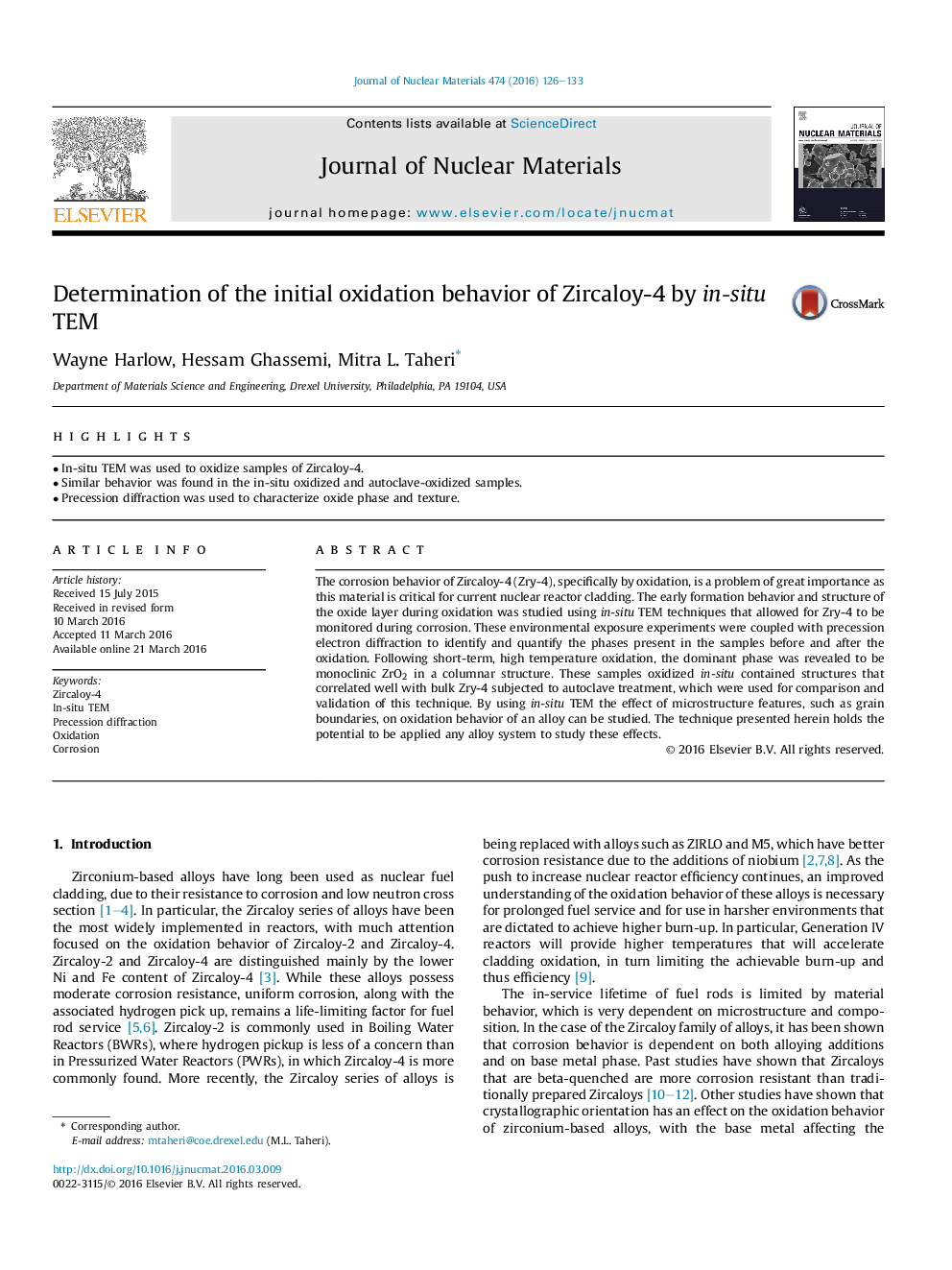| Article ID | Journal | Published Year | Pages | File Type |
|---|---|---|---|---|
| 7964352 | Journal of Nuclear Materials | 2016 | 8 Pages |
Abstract
The corrosion behavior of Zircaloy-4 (Zry-4), specifically by oxidation, is a problem of great importance as this material is critical for current nuclear reactor cladding. The early formation behavior and structure of the oxide layer during oxidation was studied using in-situ TEM techniques that allowed for Zry-4 to be monitored during corrosion. These environmental exposure experiments were coupled with precession electron diffraction to identify and quantify the phases present in the samples before and after the oxidation. Following short-term, high temperature oxidation, the dominant phase was revealed to be monoclinic ZrO2 in a columnar structure. These samples oxidized in-situ contained structures that correlated well with bulk Zry-4 subjected to autoclave treatment, which were used for comparison and validation of this technique. By using in-situ TEM the effect of microstructure features, such as grain boundaries, on oxidation behavior of an alloy can be studied. The technique presented herein holds the potential to be applied any alloy system to study these effects.
Related Topics
Physical Sciences and Engineering
Energy
Nuclear Energy and Engineering
Authors
Wayne Harlow, Hessam Ghassemi, Mitra L. Taheri,
